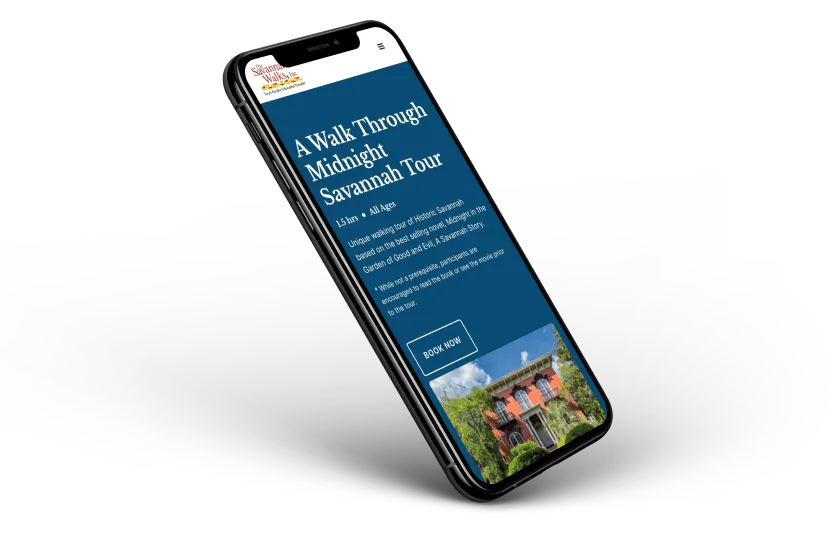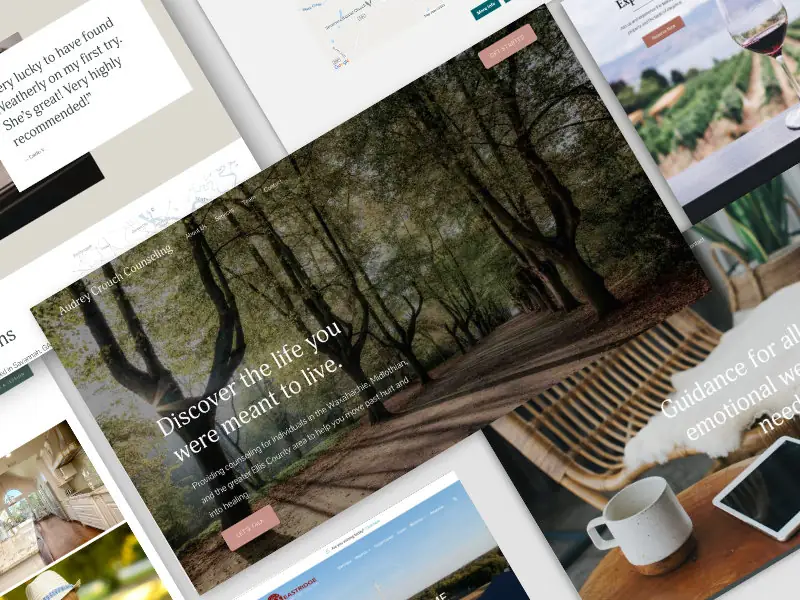Web Design
What is Web Design, and Why is it Important?

In recent years, the importance of web design has skyrocketed.
Web design, at its core, is the process of creating websites, encompassing everything from layout and color scheme to content and user interface.
However, it's more than just aesthetics; it's a pivotal factor in the online presence and success of businesses.
A Crucial Business Tool
As the world increasingly shifts online, a company's website often serves as the first point of contact with potential customers.
This makes web design an invaluable tool for creating a lasting first impression.
It's not just about making a site look attractive; it's about crafting an engaging, intuitive, and user-friendly online experience.
This article aims to uncover what web design is, its crucial components, and why it plays a vital role today.
We'll explore how it impacts user experience, brand perception, and ultimately, the success of your business online.
Section 1: Defining Web Design
Comprehensive Overview
Web design is a multifaceted discipline involving the planning and creation of websites.
This encompasses a range of elements such as graphical design, content production, and layout structuring.
The end goal is to construct a digital environment where users can interact, explore, and engage with content.
Key Components
- Layout: This refers to how content is structured and categorized on the page. A well-thought-out layout ensures information is easily accessible and navigable.
- Color Scheme: Colors play a critical role in setting the mood and tone of a website, as well as reinforcing brand identity.
- User Interface (UI): This involves designing an intuitive and user-friendly interface that enhances user interaction and experience.
- Typography: The choice of fonts contributes to the readability and aesthetic appeal of the website.
- Content: Quality content is vital for engaging and retaining users, as well as for SEO purposes.
In summary, web design is not just about creating a visually appealing site; it’s about ensuring a seamless and engaging user experience.
Section 2: The Critical Role of Web Design
Creating First Impressions
The moment a potential customer lands on your website, they form an opinion about your business.
This first impression is largely influenced by the design of your website.
An outdated or cluttered web design can turn visitors away, while a modern, user-friendly design can engage and retain them.
Enhancing User Experience
Web design is pivotal in shaping the user experience (UX).
A website that is easy to navigate, loads quickly, and is accessible to all users, including those with disabilities, provides a positive UX.
A positive UX is essential for keeping visitors on your site longer and encouraging them to return.
Brand Representation
Your website acts as a digital ambassador for your brand.
The design of your site should reflect your brand identity, ethos, and values.
Consistency in design elements like colors, fonts, and style helps in building brand recognition and loyalty among your audience.
I know I said this earlier, but it is worth saying again, web design is not just a matter of aesthetics. Instead, it's a crucial tool for conveying professionalism, establishing trust, and ultimately influencing user behavior and decisions.
Section 3: Web Design and Business Outcomes
Driving Engagement and Conversion
Effective web design plays a vital role in engaging visitors and guiding them towards taking desired actions, such as making a purchase or signing up for a newsletter.
A well-designed website utilizes elements to create a pathways for conversion. These elements are, but not limited to:
- Call-to-action buttons
- Layout
- Navigational cues
Influence on SEO and Online Visibility
The design of a website significantly impacts its search engine optimization (SEO) performance.
Search engines favor websites that are not only content-rich but also have:
- A user-friendly design
- Fast load times
- And are mobile-responsive.
By meeting these criteria, a well-designed website can rank higher in search results, increasing its visibility and attracting more traffic.
Adapting to Mobile Trends
With the increasing use of smartphones for internet browsing, responsive web design has become crucial.
A website that adapts seamlessly to various screen sizes and devices offers a better user experience and retains more visitors.
This adaptability is not just a trend but a fundamental aspect of modern web design.
The design of your website has a direct impact on your business outcomes, affecting everything from user engagement to SEO and adaptability to mobile trends.
Section 4: Evolving Trends in Web Design
Current and Future Trends
Web design is an ever-evolving field, with trends that come and go.
Current Focus
- Minimalist Design: Websites focusing on minimalism use clean lines, ample whitespace, and limited color palettes to create a user-friendly and aesthetically pleasing experience.
- Interactive Elements: Some websites incorporate interactive elements like animations and micro-interactions to engage users more deeply.
- Accessibility and Inclusivity: Forward-thinking designs now prioritize accessibility, ensuring content is accessible to users with disabilities, which also improves overall user experience.
Looking ahead, we can expect further integration of advanced technologies like AI and VR, offering more interactive and personalized user experiences.
Current trends in web design are shaping the digital landscape, but what is exciting is that future developments in AI and VR could redefine how we interact with websites.
Think about Apple’s Vision Pro that is coming out soon. It has the potential to revolutionize how we interact with websites.
That is just one piece of technology on the horizon. You never know what is over the next ridge.
Section 5: Implementing Effective Web Design
Choosing the Right Approach
When it comes to creating a website, you have a couple of options: DIY with website builders or hiring a professional web design agency.
While DIY can be cost-effective and offers a level of control, professional services bring expertise, bespoke design solutions, and technical support.
An agency can provide a strategic approach to design, ensuring that the website aligns with business goals and brand identity.
Avoiding Common Pitfalls
A common mistake in web design is prioritizing aesthetics over functionality. A beautiful website that is difficult to navigate or slow to load can drive away users.
Another pitfall is ignoring mobile responsiveness, which can significantly affect user experience and SEO rankings.
Professional designers understand these challenges and know how to balance beauty with functionality.
Leveraging Professional Expertise
Working with a professional web design agency, offers several advantages.
- They bring a wealth of experience.
- Understand the latest trends and best practices.
- Can tailor a website specifically to your business needs.
This can result in a website that not only looks great but also performs well in terms of user engagement, conversion rates, and SEO.
Effective web design is a critical investment for any business.
By choosing the right approach and avoiding common pitfalls, businesses can create a website that is not only visually appealing but also functional, user-friendly, and aligned with their strategic goals.
Conclusion
In a short time, we have journeyed through the multifaceted world of web design, exploring its definition, key components, and the pivotal role it plays in shaping business outcomes.
We've seen how design influences first impressions, enhances user experience, and is integral to brand representation.
The discussion on current and future trends in web design highlights the dynamic nature of this field, constantly adapting to new technologies and user expectations.
Effective web design is not just desirable—it's essential.
It's a powerful tool that can drive:
- Engagement
- Enhance brand visibility
- And contribute significantly to business success.
While there are various paths to achieving a well-designed website, the expertise and strategic approach offered by professional web design services are unparalleled.
Whether you're looking to revamp an existing site or build a new one from scratch, consider the impact that professional web design can have on your business.
With the right design, your website can become a robust platform that not only reflects your brand but also drives growth and success.
If you want to talk about redesigning your website, book a free website consultation with us.
End to End Webflow Design and Development Services
From Web Design and SEO Optimization to Photography and Brand Strategy, we offer a range of services to cover all your digital marketing needs.

Webflow Web Design
We design custom Webflow websites that are unique, SEO optimized, and designed to convert.
Webflow Maintenance
Gain peace of mind knowing that a Webflow Professional Partner is maintaining your website.

Claim Your Design Spot Today
We dedicate our full attention and expertise to a select few projects each month, ensuring personalized service and results.






